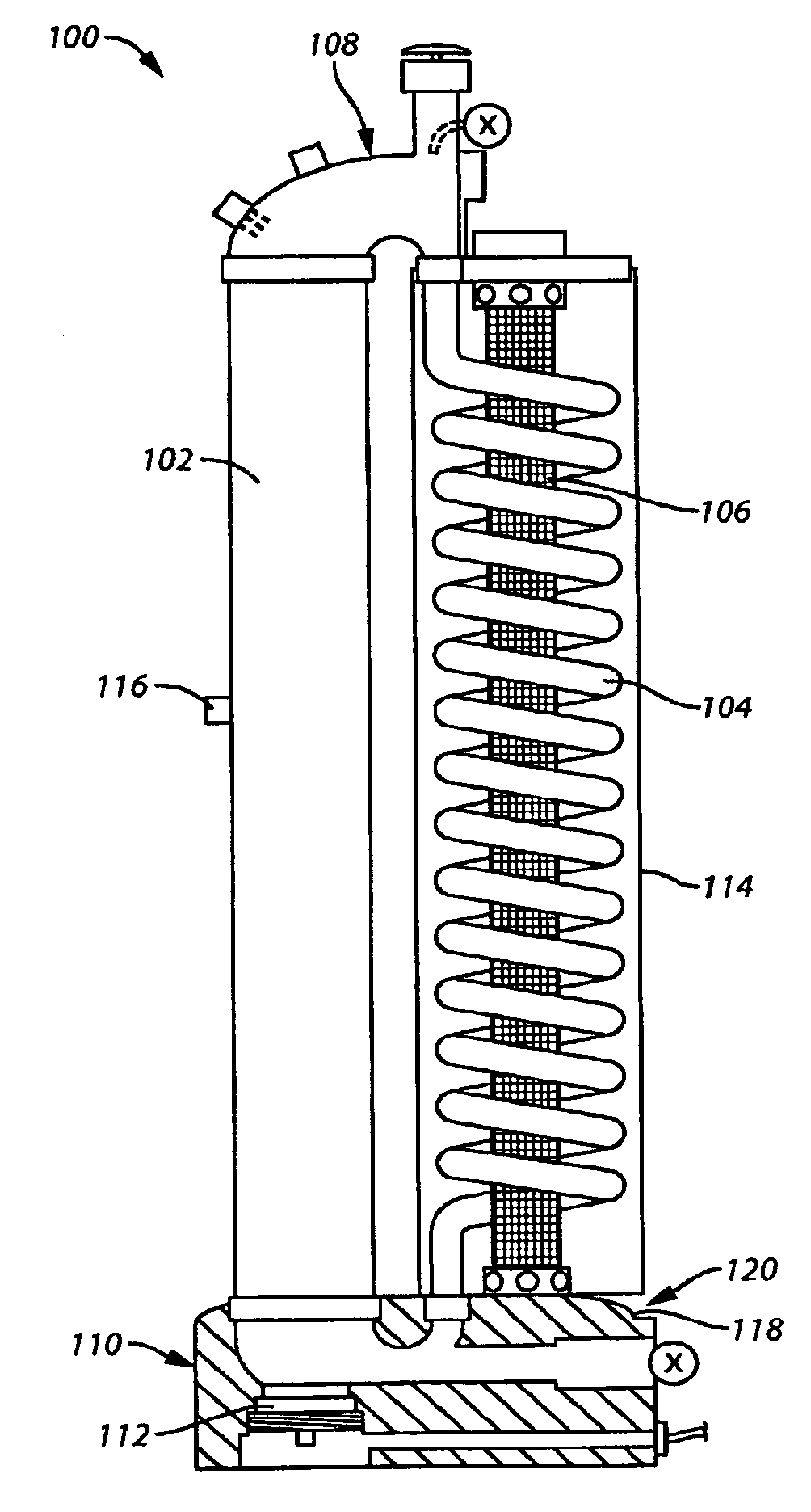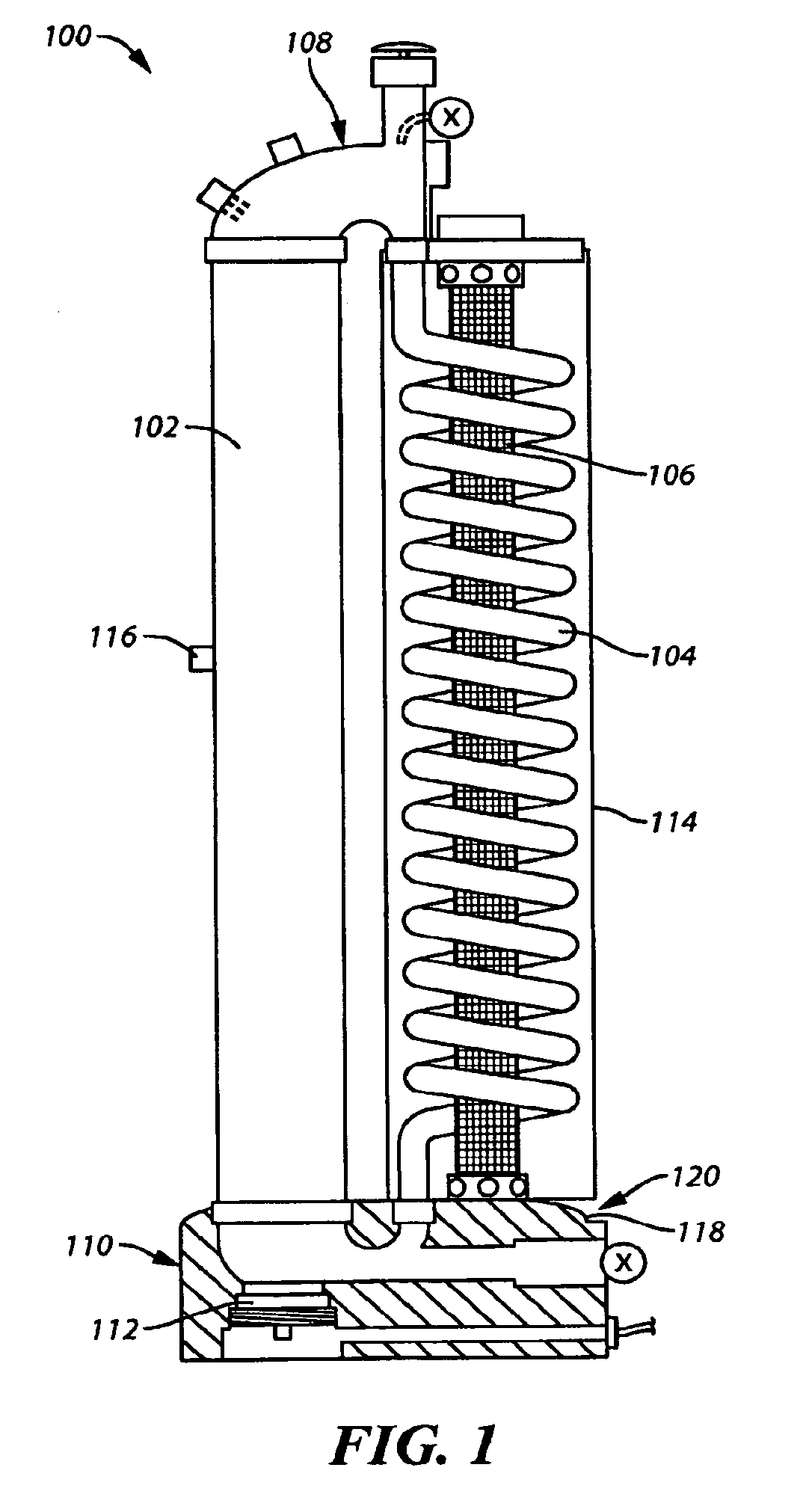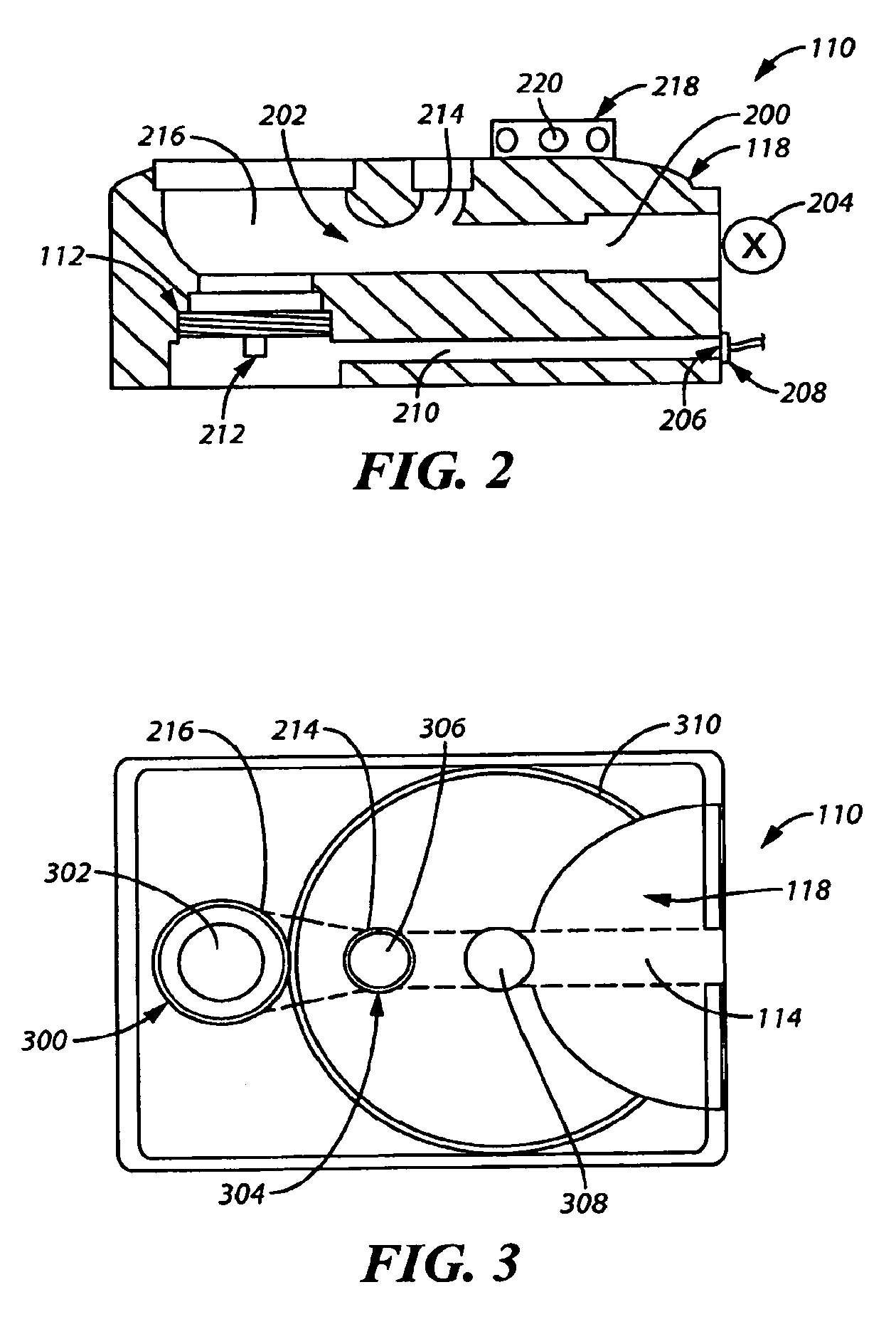Photobioreactor and method for processing polluted air
- Summary
- Abstract
- Description
- Claims
- Application Information
AI Technical Summary
Benefits of technology
Problems solved by technology
Method used
Image
Examples
Embodiment Construction
[0037]Generally speaking, pursuant to these various embodiments, a photobioreactor is disclosed herein having a generally vertical fluidic pathway and a generally vertical helically shaped fluidic pathway. As used herein, the generally vertical helically shaped pathway is vertical in that the fluid medium moving within the pathway is displaced over a substantially vertical distance. The two fluidic pathways are fluidly connected by a head cap assembly and a base assembly such that a biologically active material is able to move fluidly, without substantial impediment, back and forth between the generally vertical fluidic pathway and the generally vertical helically shaped fluidic pathway.
[0038]By one approach, a light source is at least partially positioned inside a portion of the generally vertical helically shaped fluidic pathway. The light source may be a light emitting diode (LED). By one approach, this light source can comprise a plurality of light emitting diodes (LEDs). Furthe...
PUM
 Login to view more
Login to view more Abstract
Description
Claims
Application Information
 Login to view more
Login to view more - R&D Engineer
- R&D Manager
- IP Professional
- Industry Leading Data Capabilities
- Powerful AI technology
- Patent DNA Extraction
Browse by: Latest US Patents, China's latest patents, Technical Efficacy Thesaurus, Application Domain, Technology Topic.
© 2024 PatSnap. All rights reserved.Legal|Privacy policy|Modern Slavery Act Transparency Statement|Sitemap



